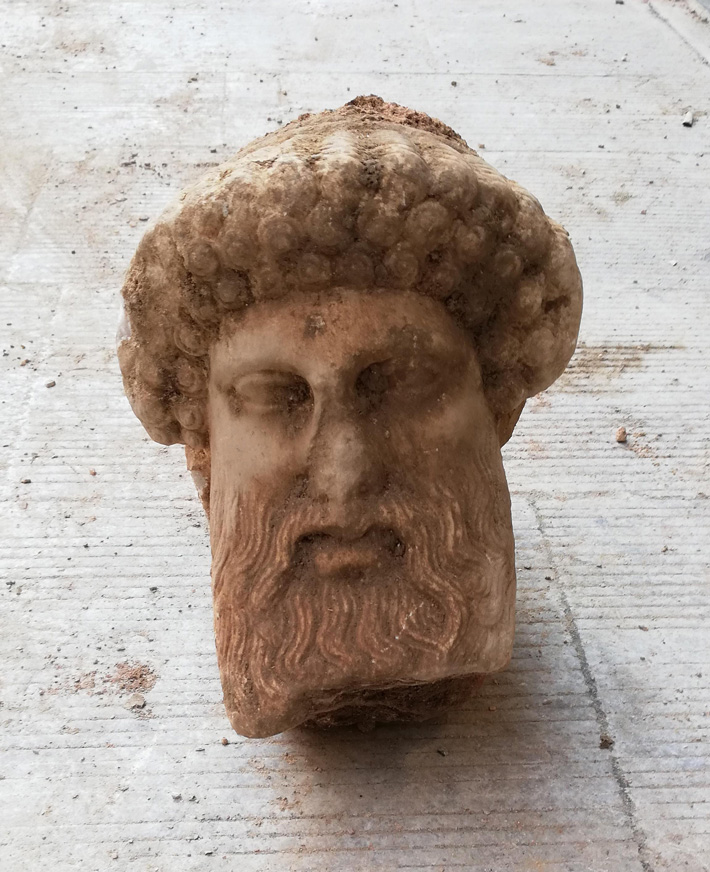Sculpture of Greek God Hermes Found in Athens
According to a statement released by Greece’s Ministry of Culture and Sports, municipal workers discovered a fragment of an ancient sculpture built into a sewer line under Aiolou Street, near St. Irene Square.
The head of an ancient statue of the Greek god Hermes has been unearthed during excavations for sewage system improvements in central Athens, the ministry of culture said Sunday.
The “original artwork dating late 4th century BC or early 3rd century BC” is in good condition, a statement said.
The marble head found just 1.3 metres (four feet) under the pavement on the busy Aiolou street on Friday, “depicts the god in a mature age and is obviously a part of a herm”, the statement added.
Herms or Hermas are sculptures, usually of the head of Hermes, and sometimes a torso, which was set on a squared column erected at road crossings as signs.

According to Greek mythology, Hermes was the son of Zeus and the messenger of the gods, who also protected travellers and merchants.
The ministry gave no estimate of the value of the sculpture but it was immediately transported to a warehouse of the directorate of antiquities.
On Saturday, Athens mayor Kostas Bakoyannis posted a photo of the Hermes head on his Facebook account. “Unique Athens”, he said.





